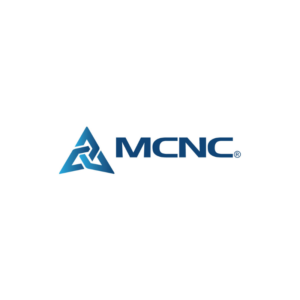High performance services require high performance accounting systems. No one knows that better than Angie Sellars, Assistant Controller at MCNC, a non-profit client-focused technology organization in North Carolina.
MCNC owns and operates the North Carolina Research and Education Network (NCREN), one of America’s longest-running regional research and education networks. With more than 40 years of innovation, MCNC provides high-performance services for education, research, libraries, healthcare, public safety, and other community anchor institutions throughout North Carolina. As one of the nation’s premier middle-mile fiber networks, MCNC leverages NCREN to customize Internet services and related applications for each client while supporting private service providers in bringing cost-efficient connectivity to rural and underserved communities in North Carolina.
MCNC had previously been using Deltek’s Costpoint ERP solution, but Sellars found that the system was lacking some important features that she required to run the accounting functions efficiently. MCNC began searching for a modern ERP that would allow the organization to save PDF/Excel docs directly within the system, globally search records, and enable employees to view their paycheck information directly.
“This last feature was not available in Costpoint,” Sellars explained. “We had to print and mail our employees’ direct deposit remittances every payroll.”
After signing with NetSuite for its ERP solution, Sellars soon learned that the product required an add-on for two critical components she had been accustomed to in the past—DCAA compliance, and the ability to do cost allocations. She soon was introduced to Daston’s DCCA-on-Demand Suite App.
Daston’s government-compliant DCAA-on-Demand SuiteApp Cloud Software offers everything from indirect rates management (fringe, OH, G&A), monthly financial reporting, profitability reporting by contract, incurred costs submission reports, vendor payment processing, bank/credit cards reconciliations, contract funding, value reporting, and more.
Because MCNC’s network is the fundamental broadband infrastructure for 850 institutions, including all K-20 education in North Carolina, cost allocations were critical, she continued.
“We are overly complicated in how we love to slice and dice data,” Sellars explained. “While most companies typically use three types of reports—fringe allocation, direct labor overhead allocation, and G&A overhead allocation—we require eight. Daston was able to accommodate our need for high level data analysis.”
For example, while some of the organization’s allocations are based on headcounts for customers, items such as fiber allocation are based on usage, so MCNC must know how to segment costs out to institutions in various ways.
“Our highly complicated customized project script required collaboration with Daston to ensure our allocations and timekeeping were set up properly,” Sellars said. “Daston was and continues to be a reliable partner in helping us understand, navigate, and troubleshoot the system. I’m extremely impressed with their responsiveness and commitment to customer service.”
Since implementing the system, MCNC has benefited in various ways. The waterfall aspect with Daston’s solution has been easier to navigate than the previous Costpoint solution, she explained. For instance, with Costpoint, MCNC wasn’t able to get cost allocations directly to the general ledger (GL) on a project level. Instead, the project module worked independently of the GL.
“If we wanted to see the overhead of a project or anything that was allocated, we had to go to the project module and not the GL, and the information came in as a rolled up value,” she explained.
Conversely, Daston’s solution shows allocations directly to the project in the GL.
“This was a big shift that was monumentally better,” Sellars said.
Additionally, with using Costpoint, they had to go through a four-step process each time they ran an allocation. If any data was missed, it wouldn’t allocate correctly, and they would have to start the entire process over. In between running reports, there was an opportunity for people in the department to book entries, which meant the data wasn’t always in real time.
“Daston allows me to book all entries, and I can run reports in seconds,” she said. “All I have to do is hit ‘go.’ Daston’s solution is seamless and saves me hours’ worth of work because I don’t have to do a bunch of extra steps, which also reduces human error.”
Daston’s unit loading is an improvement over Costpoint, as well. Previously, the team would manually enter monthly changes to unit into the Costpoint ERP.
“In Daston, we upload all the units at once, which eliminates the tedious data entry portion of the process,” Sellars noted.
Beyond meeting MCNC’s functionality requirements, Daston’s customer service and responsiveness has been impressive to Sellars. She noted that the Daston technical support team has been immediately responsive.
“Our contact, Faisal, has been thoroughly available, which is the key in doing any implementation—to have a partner you feel like knows the process and the system even better than you do,” she said. “Sometimes when speaking with anyone in technical support helping from the outside who doesn’t know what we are doing, it can become a bigger mess, but Faisal understands our systems and can explain clearly how we can make it work.”